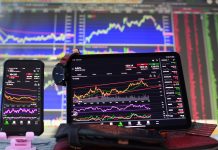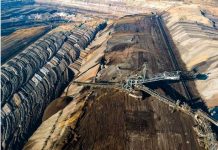*Editor’s Note: The following is a report I developed for Oil & Gas Investor magazine, published in its December 2010 edition. Part 1 of the story is re-printed below with their permission.
Exchange-traded funds have been on a roll. Here’s how to find the one with the best fit, and make it pay off. But watch for the “roll.”
Commodity exchange-traded funds, or ETFs, were created early in the last decade to give retail investors an easy way to play hard assets such as oil and natural gas and metals in one broad investment vehicle.
And the strategy has worked—in spades. A low fee structure, preferential tax treatment and strong marketing have propelled commodity ETFs to $97.8 billion in assets under management as of September 30 2010, according to industry data from BlackRock, one of the largest ETF issuers. BlackRock’s data also indicate that overall ETF assets at the end of September were just under $800 billion and growing—up 13% over 2009.
Now, almost 10 years after ETFs’ launch, retail investors have a lot of access—31 energy ETFs and related products alone; 890 total, across all sectors in the U.S.; and 149 new ones just this year. But quantity hasn’t equalled simplicity.
Management from even the most straightforward—and largest—energy ETFs have had to defend themselves at congressional hearings in describing how their funds work. And other energy ETF issuers have launched products that use new and different ways to both track commodity prices and increase returns.
With all the choices of energy ETFs and the confusion around how they work, how can investors decide which one is right for them? And more importantly, how can they make money at it?
Choosing ETFs
ETF issuers and independent analysts say investors need to know the answers to three basic questions before making a purchase:
• What is the timeline of the trade?
• Is the futures market for that commodity in contango or backwardation?
• Do you know what you’re buying? ETFs now have very different exposures to energy prices.
“It’s not that complicated,” says John Hyland, chief investment officer for U.S. Commodity Funds LLC, which issues the United States Oil Fund LP (USO-NYSE) and the United States Natural Gas Fund LP (UNG- NYSE).
“By the time you’ve answered question No. 1 and No. 2, your choices have now been limited to a couple ETFs—those questions have done 90% of the work” for investors looking to invest in ETFs, he says.
“If someone comes to you with a bond, you ask what the time frame is (until maturity), and ask yourself are interest rates going higher or lower over that time, and then you pick what you’re going to do. I don’t think it’s any more complicated than that, really,” Hyland concludes.
Michael Johnston, senior analyst at ETF Database in Chicago, agrees, adding, “What we find is that people don’t understand how they’re getting exposure” to the underlying commodity when they buy ETFs.
An energy ETF can try to track the spot commodity price, or an oil and gas stock index, or a basket of stocks—or, as the market is seeing now, the ETF can track a custom product that the issuer has made up itself.
But Hyland’s USO and UNG are by far the largest and most liquid investments in the energy ETF world, and they use—in fact, most issuers use—the futures market to run their ETFs.
And using the futures market is where the biggest frustration for investors becomes apparent, in the cost of “rolling” futures contracts. Knowing how the futures market works, not just how the spot price market works, is key in who wins or loses in ETF investing.
“Some investors came into ETFs looking at spot prices to gauge the success of their investment, but that exposure is not something you can always achieve,” says Bryon Lake, senior product manager for Invesco PowerShares, an ETF issuer. “The next best thing is to use a futures contract.”
But the wild volatility in energy prices over the past two years brought about the near- market collapse in 2008, and the recovery so far in 2009-2010 has meant that the futures market sometimes did not track spot prices.
Tracking the future
Most energy ETFs actually track a futures contract, not spot prices. And during volatile markets, investors were getting the former, when they thought they were getting the latter. That made for some big discrepancies in 2009; Johnston says the price of natural gas was only down 1% on the year but Hyland’s UNG ETF lost half its value. (Johnston wrote in March 2010 that while UNG continues to decline, it is actually tracking the natural gas price almost perfectly once the wild volatility stopped.)
So understanding the future—not just the present—is very important to returns. And this is where the two basic questions for investors get answered.
What is the timeline of the trade? And are the futures contracts showing higher prices (in contango) or lower prices (backwardation?)
Follow this link for Part 2 of my report, ETF Investing in the Oil & Gas Market.
– Keith
* Article originally published in Oil & Gas Investor in December 2010
Want to learn more about investing in junior oil and natural gas stocks? If you have a Facebook account, just “like” this article and a hidden link to Keith’s 10 page how-to on oil and gas investing will appear:
[facebook-like id=”1″ ]









